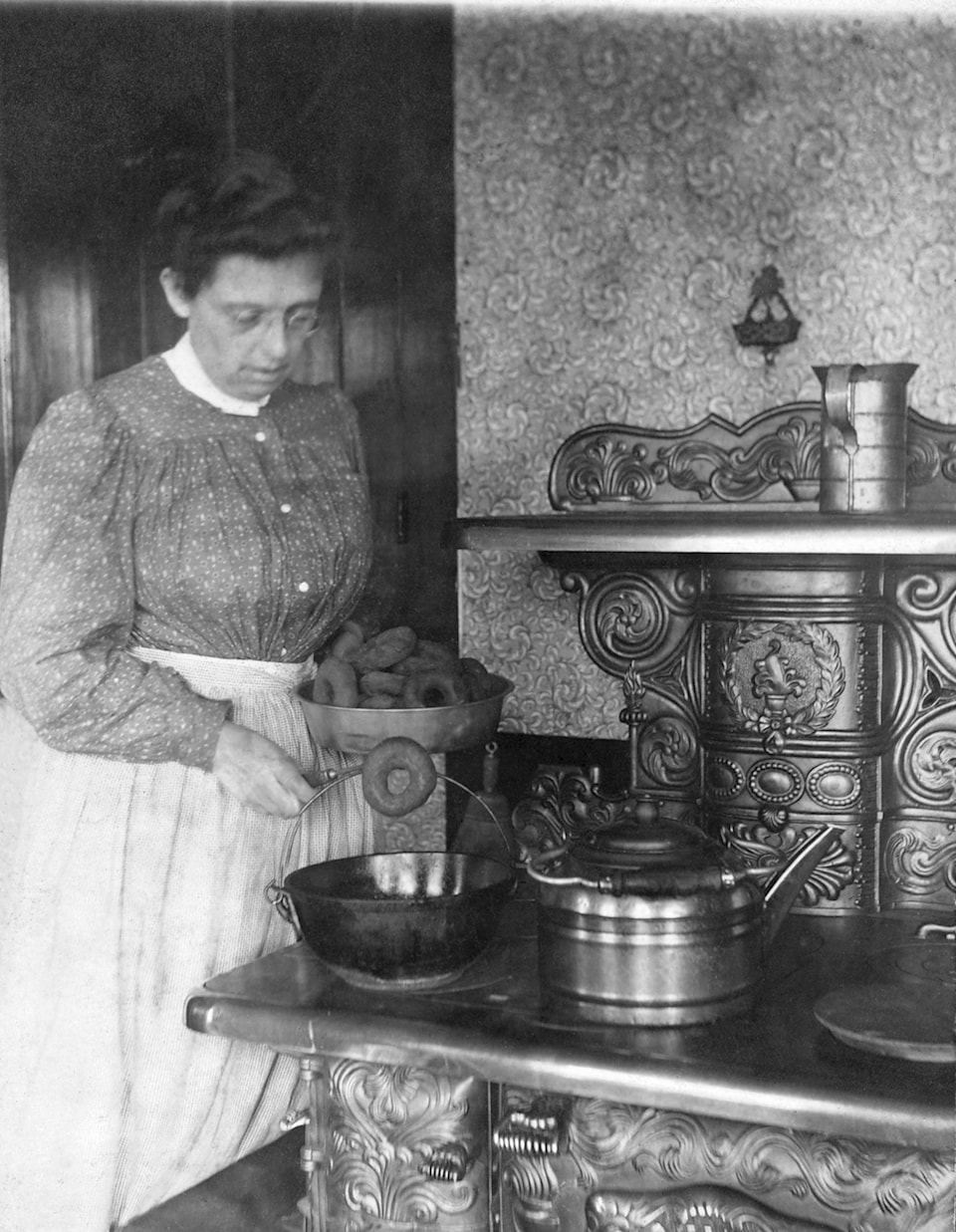We’ve already had some cool nights, frosty mornings and even a light snow fall already this October in the North Thompson Valley. The migrating birds have flown south and the resident squirrels and chipmunks are still busy stocking their larders.
When I feed our horses and cattle in the mornings I see their thick coats starting to fluff out to hold in their body warmth and many a morning their breath is visible in the frosty air.
The same is true for the deer who fre-quent our yard - they have fattened up and grown a rich coat in preparation for the cold to come.
These are all signs that Old Man Winter is just around the corner. Signs that those who live here have been paying attention to since man first walked the valley.
Back then if you didn’t heed the signs you most likely would not survive the winter that was coming. Fall always brought a hectic pace of readying for the colder months ahead. Back then temperatures were often recorded in the minus -40° degrees or worse. The river froze solid every year, and people were able to ride or walk across it on a daily basis in many areas. Children walked across the river ice to attend school.
Fall gardens and crops had to be harvested, and cool dark root cellars were stuffed with potatoes, turnips, apples and all manner of produce, including grains and seeds that could be preserved through the coming months. Dried fish was canned, hung, or wrapped and stored as safely as possible to keep it away from the ever-present pests of mice and pack rats.
Houses and cabins smelled wonderfully inviting as the women of the house (and sometimes the men) cooked up huge pots of preserves, stews, pickled eggs and more that would fill each of the shelves in their pantry long before winter blew into the valley.
The men hunted. It was their job to bring back the meat. Moose, deer, a fat rich bear, all provided enough meat to feed a family for quite sometime. Not just the meat, but the hides, the tallow – everything was utilized.
There were trips to the forest to harvest wood for heating and cooking. Then haul the firewood back to the homestead, split and stack it, and then head out for another load until you had enough wood to take you through the winter and at least well into springtime.
Those with livestock had to make sure all of the cattle were down from the high country and that there was plenty of hay in the barn or stacks to feed all of the hungry animals who would be staying there. Pastured livestock had to be brought closer to the homestead where feed and water was available to them. Chicken coops were prepared for cold weather blasts and nest boxes well-bedded with straw.
Warm clothes, mittens, caps and scarves were brought out of storage, and a lineup of warm boots appeared by the door.
Staples such as flour, dried beans, salt, sugar, molasses, coffee and tea were purchased in large amounts, along with spices, seasonings and of course yeast. In later years, before electricity came through the valley, homes also needed a good supply of fuel for lanterns, and if you were lucky enough to have a tractor, vehicle or generator you needed fuel for that as well.
The roof was checked, the chimney cleaned, and any spaces with a draft coming in was plugged.
Finally, the front porch was seen to be sporting a pile of firewood, an ax and a pick ax, a snow shovel, a toboggan, ice skates, snowshoes, crosscountry skis, a couple of buckets, and an old rug or pile of sacking for the dog.
Here in the valley in 2017, although we are still preparing for the cold weather to come, most of us have transportation, electricity or solar power, the convenience of shopping close to our homes for most of our needs, telephones, cell phones, the internet, medical services, First Responders, and so much more.
Now our winter preparations are about getting our snow tires on by October 1, bringing in firewood if we need it (or you can have it delivered), or getting wood pellets delivered, hitting the case lot sales at the grocery store, going hunting or not, canning and preserving produce from your garden – or not, plugging in the tractor or vehicle so it will start in the morning, plugging in the stock tank heaters and the heated dog house, winterizing the RV, putting antifreeze in the vehicles, taking the tarp off the snowmobile, and maybe purchasing new felt liners for your snow boots.
Don’t you think the folks who prepared for winter here so long ago would truly be amazed at how we get ready today?
I do!
Stay warm.
